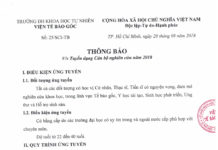By transfecting virus which carries 4 transcription factors (TFs) into myofibroblast, researchers were successful in the direct transformation of myofibroblast into iHepatocyte (iHep) in vitro and in vivo. This work helps to prevent liver fibrosis accomplishment by reducing myofibroblast number and improving liver function with an increase of iHep in liver cirrhosis.
A team of collaborated researchers from Germany and Spain led by Song and Pacher reported their work on 25th February in Cell Stem Cell that they found 4 TFs which facilitate converting myofibroblasts to iHeps in vitro. They are FOXA3, GATA4, HNF1A, and HNF4A from a polycistronic lentiviral vector and the expression of these transcription factors converts mouse myofibroblasts into cells with a hepatocyte phenotype. Using the same TFs on in vivo transfection, researchers showed that “We have therefore been able to convert pro-fibrogenic myofibroblasts in the liver into hepatocyte-like cells with positive functional benefits. This direct in vivo reprogramming approach may open new avenues for the treatment of chronic liver disease”.
First of all, scientists screened the essential TFs which can convert one type of cells to hepatocyte-like cells based on previous studies in order to apply in myofibroblast cell lineage. They discovered 4 TFs in 7 TFs playing critical roles on inducing myofibroblasts into iHeps, that can express liver functional protein and enzyme such as Albumin and CYP3A. Moreover, this converted cells showed the similar morphology, gene expression, function as hepatocyte. The authors then tried to directly reprogram myofibroblast into iHep on fibrosis mouse model by using 4 TFs above. Remarkably, this method was effective to convert myofibroblasts to iHeps. After 30 days induced in mice, iHeps in treated mice were 1-1.2% of hepatocyte population but the control mice did not show any iHeps. In addition, iHep induced mice reduced liver fibrosis markers such as collagen 1A1, hydroxyl proline… and improved liver function protein, for example, Albumin in treated mice better than control one. Finally, they demonstrated the evidence for confirmation of iHep in vivo lineage derived from myofibroblast reprograming on different liver cirrhosis mice models.
“Our study demonstrates the direct conversion of pro-fibrogenic myofibroblasts in vivo into hepatocyte-like cells in the liver and shows that this can indeed ameliorate fibrosis in damaged livers. This approach provides a promising therapeutic potential for the treatment of chronic liver disease. Therefore, future studies should be aimed to enhance the efficiency of iHep generation through improvement in targeted transduction in order to provide beneficial therapeutic effects through iHep formation in more advanced liver fibrosis.”, the researchers said.

demonstrating graphic the direct reprograming myofibroblast into iHepatocyte by trasnfected vector virus expression 4 Transcription factors FOXA3, GATA4, HNF1A and HNF4A in vitro and in vivo.
LÊ VĂN TRÌNH – LÊ THỊ KIM HÒA
Địa chỉ email: lvtrinh@hcmus.edu.vnlethikimhoa19492@gmail.com
Original article: http://www.cell.com/cell-stem-cell/fulltext/S1934-5909(16)00011-4






